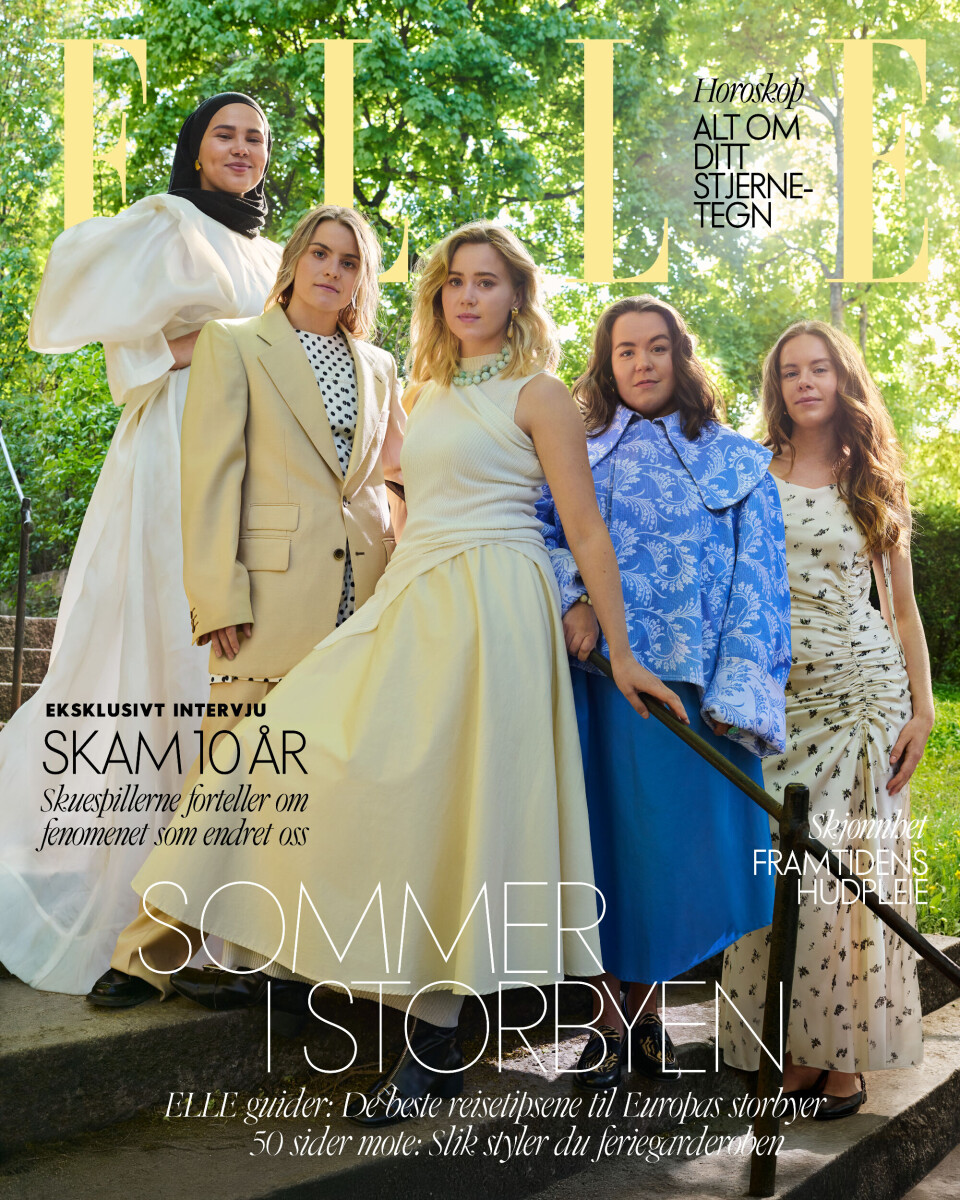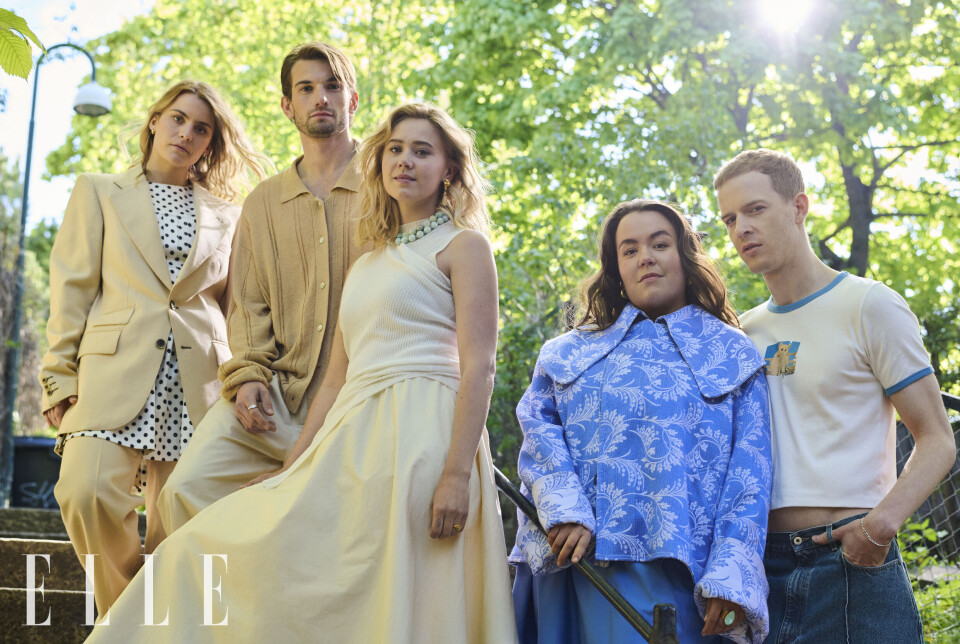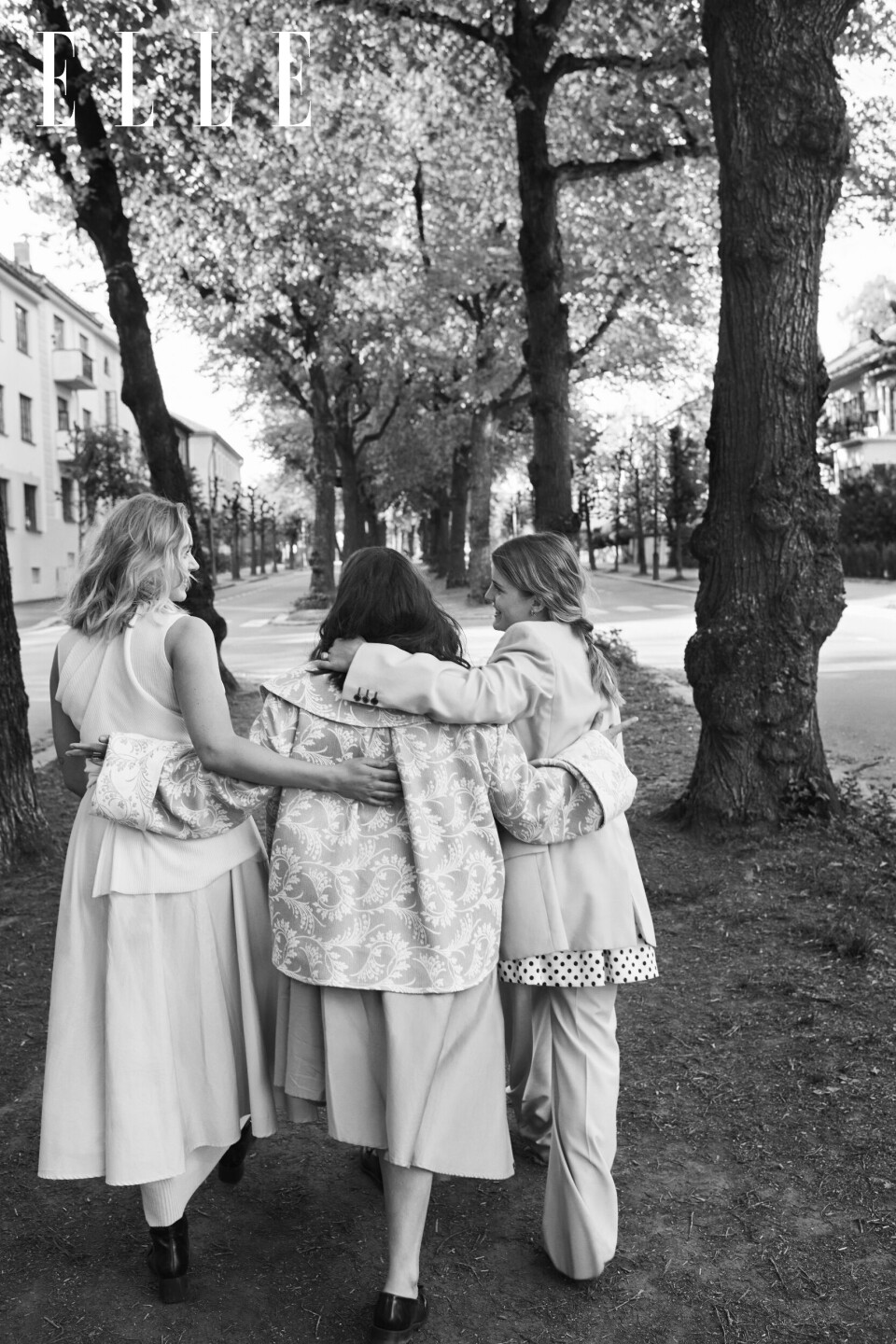kultur
SKAM 10 years: The actors on the series that changed the entire generation

Ten years after the premiere, the cast looks back on SKAM’s groundbreaking portrayal of youth and the series’ lasting legacy in Norwegian television and culture.
In this month’s issue of ELLE, we celebrate SKAM – the series that, ten years ago, changed Norwegian television and youth culture forever. We bring you exclusive interviews with the main cast, who share personal and honest reflections on what SKAM has meant to them and an entire generation.
This article is translated by Sara Flaaen Licius.
To read the full interview, buy this month's limited edition of ELLE magazine.
SKAM 10 years
When SKAM first hit the screens in 2015, no one quite knew what it would become. But it didn’t take long before the series turned into something far more than just “ordinary” entertainment.
SKAM became a mirror for a generation – and, for many, the first place where they truly felt seen.
This year marks 10 years since the series premiered on NRK, and with that in mind, it feels both moving, nostalgic, and natural to look back – and more than appropriate to celebrate what must be said to be one of the most influential Norwegian series of all time.

What impact did SKAM have?
Because SKAM wasn't just a TV-series – it was contemporary history, conveyed in the language of youth. It was a kind of snapshot of what it means to be young in Norway today, and a “cultural movement” that stretched far beyond classrooms and shared apartments.
The series was analyzed in newspapers, discussed in cafés and on social media, and most importantly: deeply felt in the hearts of young people all over the world. But it wasn’t just the youth who tuned in. On the contrary! Many adults were drawn in as well. SKAM bridged generations and offered insight into a teenage life that many had previously only observed from the outside – or perhaps even missed a little.
It wasn’t just the format of the series that was new – with clips released in real-time and characters who had their own Instagram accounts. It was the content, the honesty, and the deep respect for the lives and struggles of young people that likely made the series resonate so deeply. SKAM showed that contemporary culture can be just as important (and beautiful) as contemporary art – when it’s created with love and a genuine desire to understand.
SKAM season 1
The first season introduced us to Eva (Lisa Teige) – and the loneliness that can arise when old friendships fade and new ones begin to form. She’s in the middle of an identity crisis after a falling out with her former best friend and is trying to find her place in a new friend group, in her relationship with Jonas (Marlon Valdés Langeland) – and within herself. The series explored how adolescence can be a fragile and confusing time, when relationships are formed and broken, and when one must, in many ways, rebuild oneself from the ground up.

SKAM season 2
In the second season, Noora (Josefine Frida) became a feminist icon for many. Her story tackled the complexity of love and the power dynamics within romantic relationships, especially in her encounter with the charismatic and at times manipulative William (Thomas Hayes). At the same time, space was made to discuss consent, sexual assault, body image, and mental health – all conveyed through Noora’s strong yet vulnerable perspective. She represented a new type of heroine in youth series: principled, smart, and independent, yet unafraid to feel deeply and show uncertainty.
SKAM season 3
Season three may have been the most groundbreaking – as Isak’s (Tarjei Sandvik Moe) journey wasn’t just about coming out as gay. It portrayed an inner struggle shaped by denial, fear of rejection, and a deep desire for acceptance. At the same time, the series showed how friendship can carry us through identity crises, and how love – in this case, through his relationship with Even (Henrik Holm) – can become a lifeline. Themes like bipolar disorder, queer identity, and feeling like an outsider were treated with a rare combination of seriousness and warmth. The series gave many young queer people a voice and a space to feel less alone.
The dialogue around mental health and sexuality also became less taboo, and the series showed how love can be both confusing and liberating.
SKAM season 4
Sana’s (Iman Meskini) story in season four brought forward something rare in Norwegian teen drama – a young, hijab-wearing Muslim girl as the main character. She balances faith and friendship, family expectations and teenage life, and struggles to find her place. Through her perspective, we were introduced to questions of religion, prejudice, community, and loyalty – but also loneliness and doubt. A central element of the season was the budding relationship between Sana and Yousef (Cengiz Al), which explored how love and faith can coexist – and what happens when emotions can’t be dictated by dogma or expectations. The season addressed what it means to live between two cultures and opened an important conversation about belonging.
SKAM was more than a TV-show
SKAM was never a show that shouted loudly. It almost whispered – and somehow, that was enough. It touched some very tender spots with its gentle strength and closeness to real life. The series also opened important doors for conversations around topics that have historically been ignored or overlooked in popular culture. But perhaps the most touching aspect was how SKAM never underestimated its audience. It trusted that young people could understand, feel, and reflect on their own. And in a time when many teenagers feel pressured to be perfect, SKAM gave them space to be human. For many, SKAM will forever be more than just a series. It was a lifeline. A friend. A feeling of not being alone.
Behind SKAM was a strong and diverse team of creative forces, with Julie Andem as director and screenwriter at the helm. Andem had a unique ability to capture the honest voice of youth and create authentic, relatable characters. Together with project manager Marianne Furevold, as well as producers, photographers, composers, stylists, and set designers, every part of the production helped shape SKAM into the cultural phenomenon it became. Music, especially, became an indispensable part of the show’s identity, helping to amplify the emotions and atmosphere of every scene.

Interview with the SKAM cast
But it wasn’t just behind the camera that SKAM stood out. The main roles, played by a young and talented ensemble, were what truly brought the series to life. The characters became more than just fictional figures – they became reflections of real teenage life, with all its uncertainty, strength, and hope. The actors managed to give their characters both depth and credibility, making them instantly recognizable and relatable.
Now, 10 years after the series debuted, we’ve had the pleasure of speaking with some of the key cast members, who share their thoughts on what it was like to be part of the SKAM phenomenon – and what it has meant for them and their generation.
Read the full interview with the cast – Lisa Teige, Josefine Frida, Iman Meskini, Ina Svenningdal, Ulrikke Falch, Thomas Hayes, Marlon Langeland, Henrik Holm, Cengiz Al, and Carl Martin Eggesbø – in ELLE Norway’s summer issue.
Also read: Renate Reinsve: “If my boyfriend comes over, I might upgrade to a tracksuit.”
The summer issue of ELLE Norway hits newsstands on Friday, June 27.
Photo: Cathrine Wessel / Tinagent
Styling: Alva Brosten / Style Management
Hair: Andrés Valle-Kløvstad / Style Management / Gevir / HairBySamMcKnight
Makeup: Agnes Gulbrandsen / Style Management / Gevir & Sandra Siff / LW Agency
Art Director: Vibeke Ruud
Text by: Charlotte Sørvald and Caroline Kildebo


























